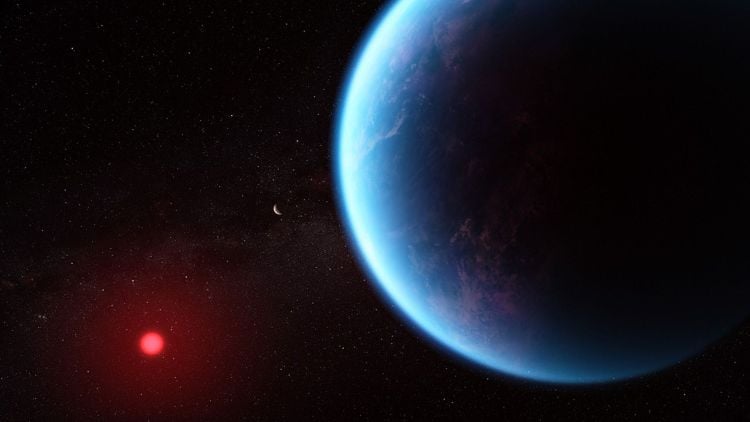How does water form on exoplanets and what could this mean for the search for life beyond Earth? This is what a recent study published in Nature hopes to address as an international team of scientists investigated the processes responsible for exoplanets producing liquid water. This study has the potential to help scientists better understand the conditions for finding life beyond Earth, and specifically which exoplanets could be viable future targets for astrobiology.
For the study, the researchers conducted a series of laboratory experiments involving blasting a diamond anvil cell with a laser designed to test longstanding computer models that have simulated water being produced from the interaction between atmospheric hydrogen and a magma ocean underneath on exoplanets. The laser experiments were conducted at extremely high temperatures and pressures of 4000 K (3,727 degrees Celsius/6,740 degrees Fahrenheit) and from 16 to 60 gigapascal (GPa) to simulate the extreme conditions on exoplanets regarding the interaction between a hydrogen atmosphere and the iron-rich silica interior. For context, the average surface of the Earth is 288 K (15 degrees Celsius/59 degrees Fahrenheit) and the average surface pressure is 10-4 GPa.
In the end, the researchers found that the magma ocean containing abundant levels of hydrogen combined with the reduction of iron oxide (removal of oxygen and transitioning into solid iron) results in large amounts of water being produced. The researchers interpret these findings as indicating that the longstanding theories of planetary formation and evolution are not only correct but result in large amounts of water being produced.
“The presence of liquid water is considered critical for planetary habitability,” said Dr. Anat Shahar, who is a Staff Scientist & Deputy for Research Advancement at the Carnegie Institution for Science and a co-author on the study. “This work demonstrates that large quantities of water are created as a natural consequence of planet formation. It represents a major step forward in how we think about the search for distant worlds capable of hosting life.”
The types of exoplanets that exhibit the properties analyzed in this study are called sub-Neptunes, whose masses are between Earth and Neptune while containing rocky interiors like Earth and hydrogen-heavy atmospheres like Neptune. While this unique combination is unlike what is seen in our own solar system, astronomers have discovered approximately 1,000 sub-Neptunes among the slightly more than 6,000 confirmed exoplanets have been confirmed to exist. There are some Sub-Neptunes that have been referred to as super-Earths if their mass and radius lean more towards Earth than Neptune.
Some well-known examples of sub-Neptune exoplanets with hydrogen-rich atmospheres and rocky interiors while also orbiting within or near their star’s habitable zone include K2-18 b, Kepler-138 d, and TOI-270 d, and are located approximately 124 light-years, 218 light-years, and 73 light-years from Earth, respectively. Additionally, all these exoplanets orbit M-dwarf stars, which are smaller and cooler than our Sun, thus meaning their habitable zones are smaller, too. However, M-dwarf stars also have much larger lifetimes than larger stars like our Sun, with estimates in the range of trillions of years, whereas our Sun only has a lifetime of approximately 10 billion years.
While astronomers have long searched for exoplanets that mirror Earth exactly, studies like this demonstrate that planets that contrast our solar system could possess the necessary conditions for life as we know it, or even as we don’t know it. Additionally, it opens the door for understanding that water might be far more prevalent on exoplanets than previously thought, specifically under longstanding models regarding planetary formation and evolution.
What new insight into exoplanets producing water will researchers make in the coming years and decades? Only time will tell, and this is why we science!
As always, keep doing science & keep looking up!

